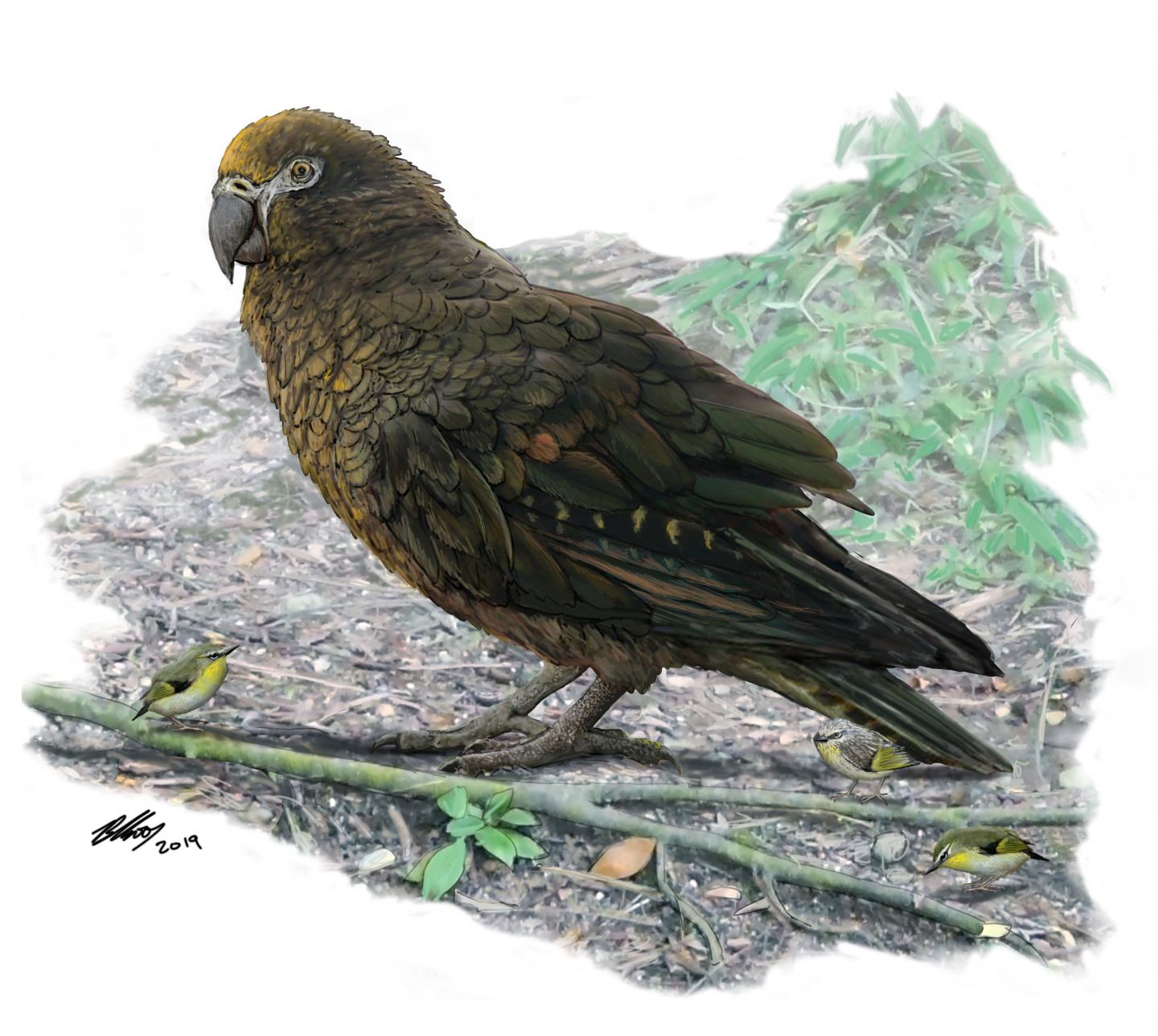A group of palaeontologists have discovered the world’s largest parrot ever which could stand up to one meter tall. It boasted a giant beak which allowed it to easily crack most of its nutritional sources. The team named it Heracles, inspired after Greek mythology. Their findings were published in the journal Biology Letters.
“New Zealand is well known for its giant birds,” Flinders University Associate Professor Trevor Worthy said in a statement. “Not only moa dominated avifaunas, but giant geese and adzebills shared the forest floor, while a giant eagle ruled the skies.
The world’s largest parrot fossil was discovered in New Zealand and measures the size of the giant “dodo” pigeon of the Mascarenes, while it’s twice the size of the New Zealand kakapo, a critically endangered flightless bird which was previously considered the largest parrot in the world. Similar to the kakapo, it was a member of an ancient parrot group in New Zealand, that are more primitive compared to the parrots that currently live in Australia and other continents.
Heracles likely weighed about 15 lbs and was 3.2 feet tall. It was found among fossils that are likely around 19 million years old, located near St Bathans in Central Otago, New Zealand. The area where the world’s largest parrot was discovered is a famous fossil site of birds that lived in the Miocene era.
“We have been excavating these fossil deposits for 20 years, and each year reveals new birds and other animals,” Worthy said. “While Heracles is one of the most spectacular birds we have found, no doubt there are many more unexpected species yet to be discovered in this most interesting deposit.”
“Heracles, as the largest parrot ever, no doubt with a massive parrot beak that could crack wide open anything it fancied, may well have dined on more than conventional parrot foods, perhaps even other parrots,” said Professor Mike Archer, from the UNSW Sydney Palaeontology, Geobiology and Earth Archives (PANGEA) Research Centre. “Its rarity in the deposit is something we might expect if it was feeding higher up in the food chain,” he says, adding parrots “in general are very resourceful birds in terms of culinary interests.”
It’s no secret that birds have managed to evolve giant species on islands, such as the dodo. Other giant birds that evolved on islands include a giant pigeon found on Fiji, a giant stork on Flores, giant ducks in Hawaii, giant megapodes in New Caledonia, as well as giant birds in the Caribbean. The newly-discovered world’s largest parrot is no exception. Scientists believe that Heracles roamed in the diverse subtropical forest where it could feed on different laurel and palm species that grew there.
“Undoubtedly, these provided a rich harvest of fruit important in the diet of Heracles and the parrots and pigeons it lived with. But on the forest floor Heracles competed with adzebills and the forerunners of moa,” says Professor Suzanne Hand, also from UNSW Sydney.





